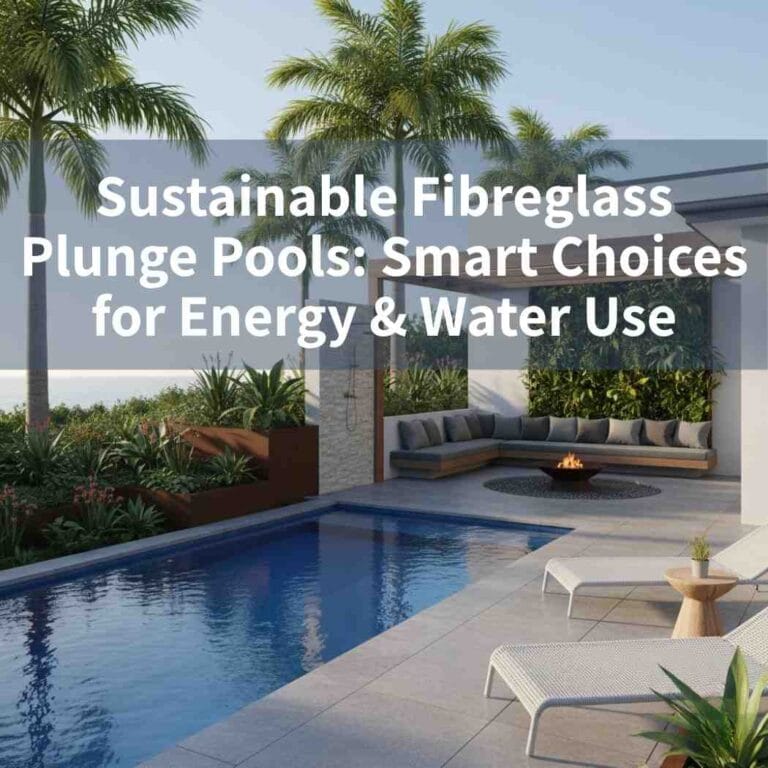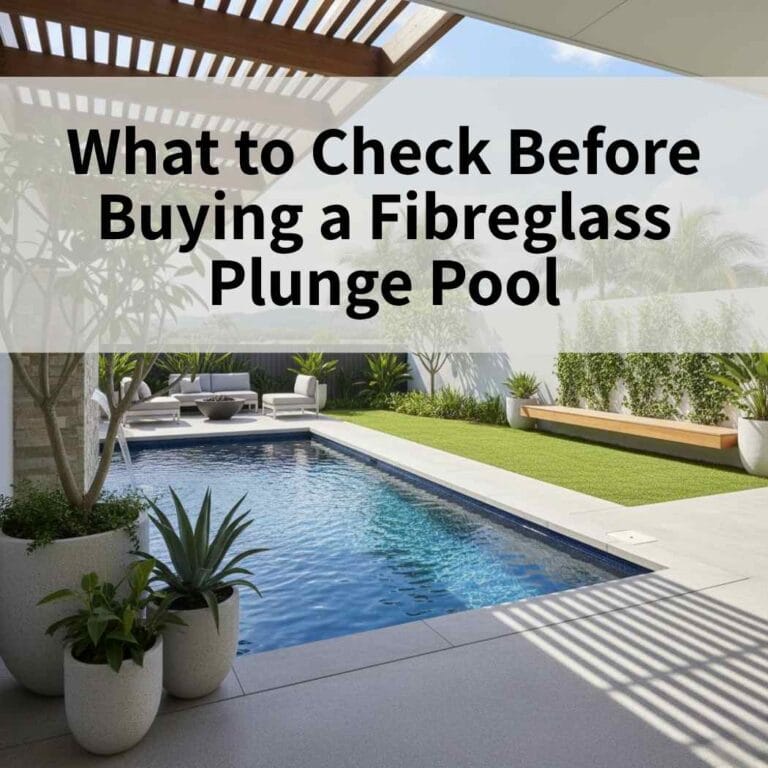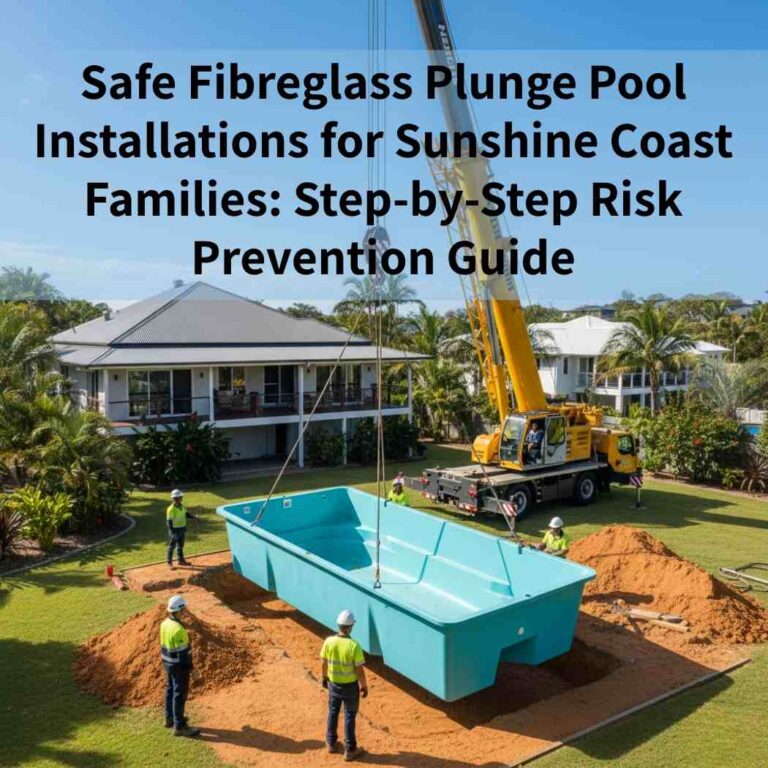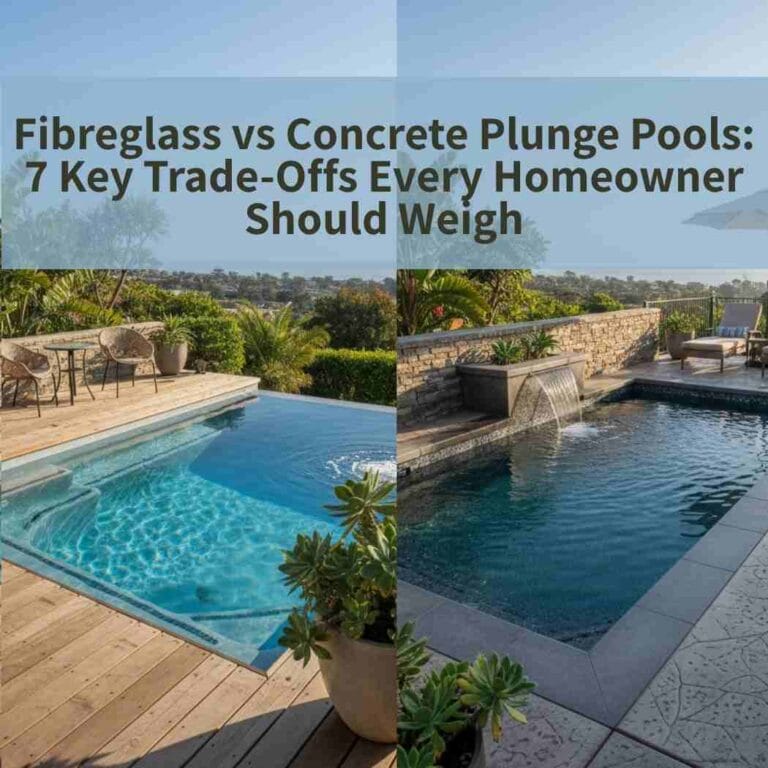At Plunge Pools Sunshine Coast, we’ve been helping local homeowners enjoy sparkling fibreglass plunge pools for years. Our team knows how to protect your investment and make pool care simple.
For homeowners comparing design, durability, and maintenance, our complete guide to fibreglass pools explains every factor before and after installation.
Fibreglass plunge pools are smooth and naturally resistant to algae. But without the right routine, even they can run into problems.
In this guide, you’ll learn:
- What causes algae in plunge pools
- The main types of algae you might see
- How to clean the fibreglass waterline
- Which algae control products are safest for the gelcoat
By the end, you’ll know exactly how to keep your fibreglass plunge pool crystal clear all year.
Table of Contents
ToggleWhy Algae Grows in Fibreglass Pools
Fibreglass pools are non-porous and more resistant to algae than concrete pools. However, algae can still grow if water is unbalanced or the pool environment is neglected. Once algae and bacteria growth begins, it can spread quickly.
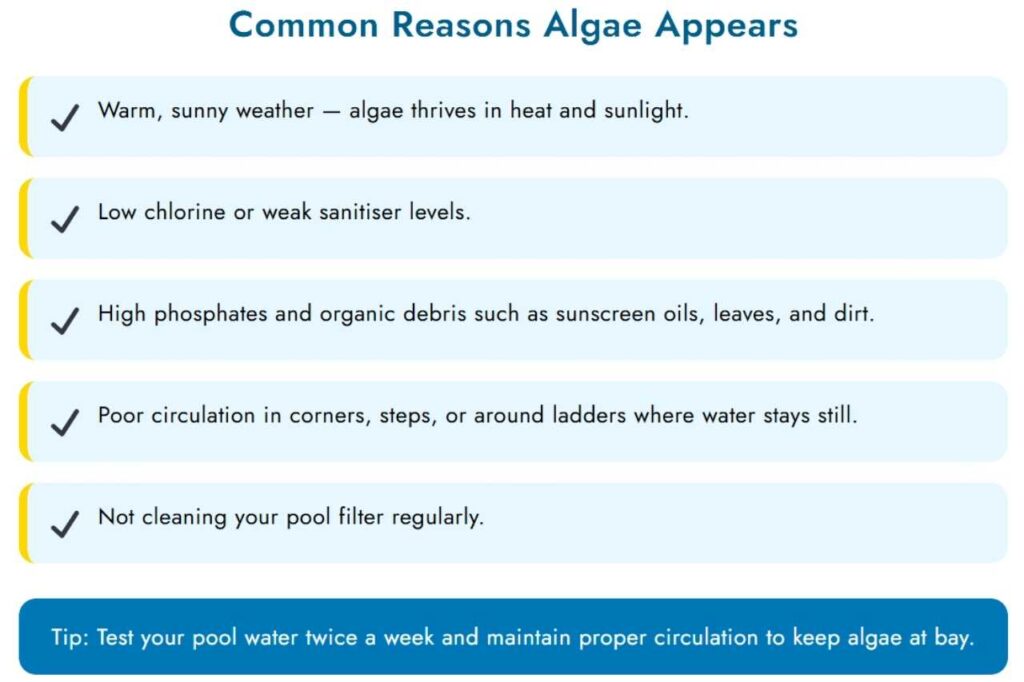
Risks of Algae Growth
Algae isn’t just unsightly; it can create several risks:
- Safety concerns: Slippery surfaces increase the risk of accidents.
- Health risks: Algae can harbor bacteria, posing potential health hazards.
- Damage to pool appearance: Algae stains walls and floors and makes water cloudy.
- Higher long-term maintenance costs: The longer algae is left untreated, the more chemicals, labour, and water adjustments are needed.
In plunge pools, algae spreads quickly because of compact water volume.
Different Types of Pool Algae
Knowing the type of algae helps you treat it effectively:
- Green Algae: The most common; turns water green and cloudy.
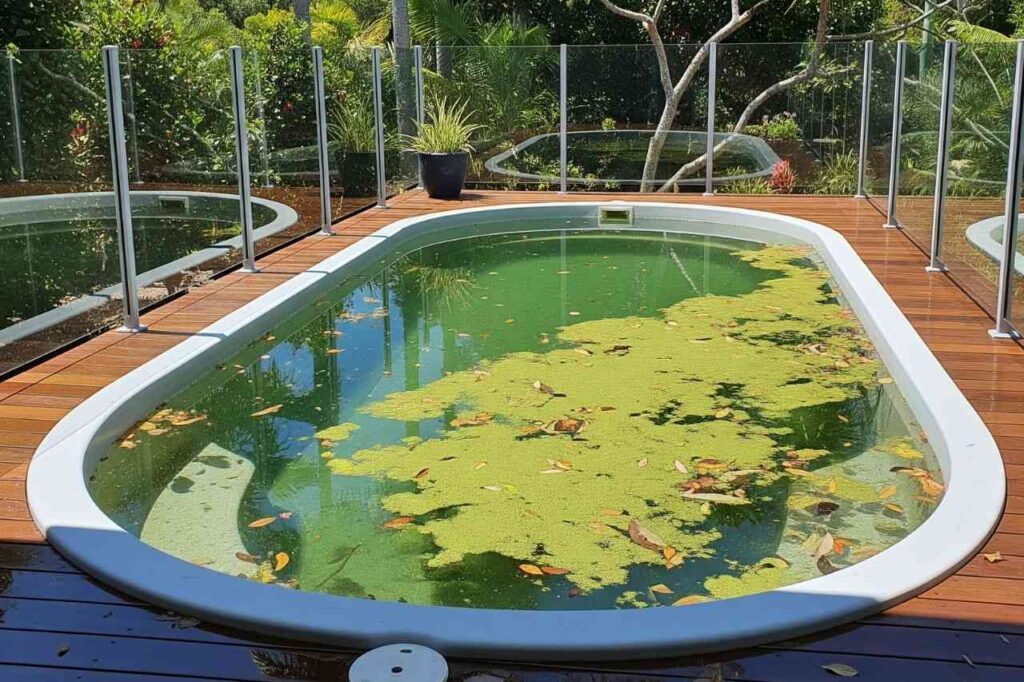
- Yellow Algae (Mustard): Yellow or brownish dust in shaded areas; harder to remove.
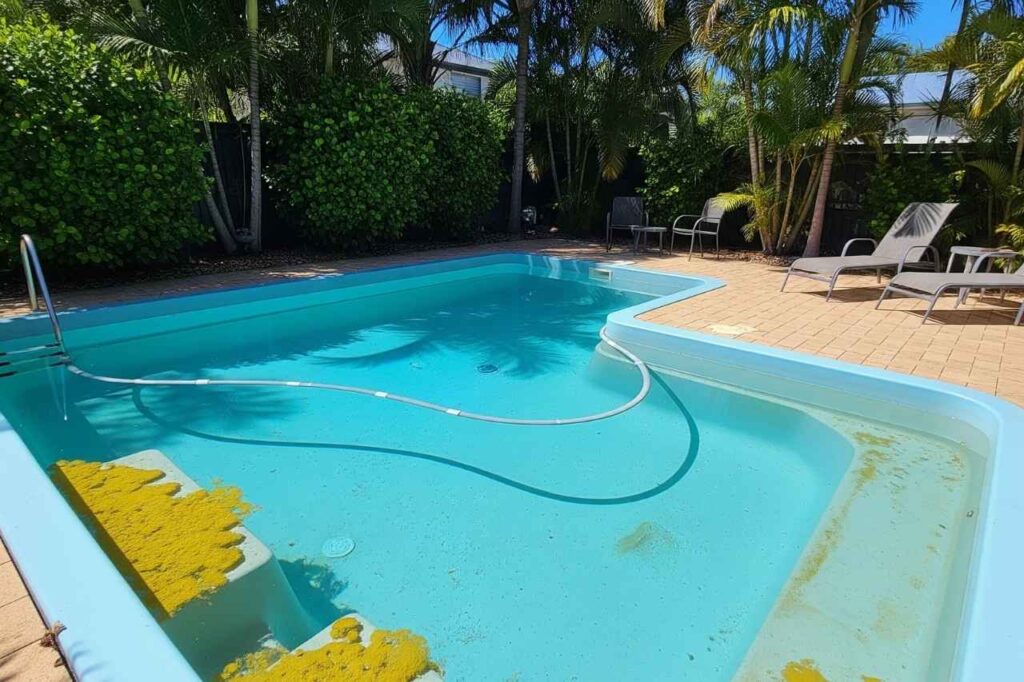
- Black Algae: Deep roots in rough surfaces; requires aggressive brushing and repeated treatment.
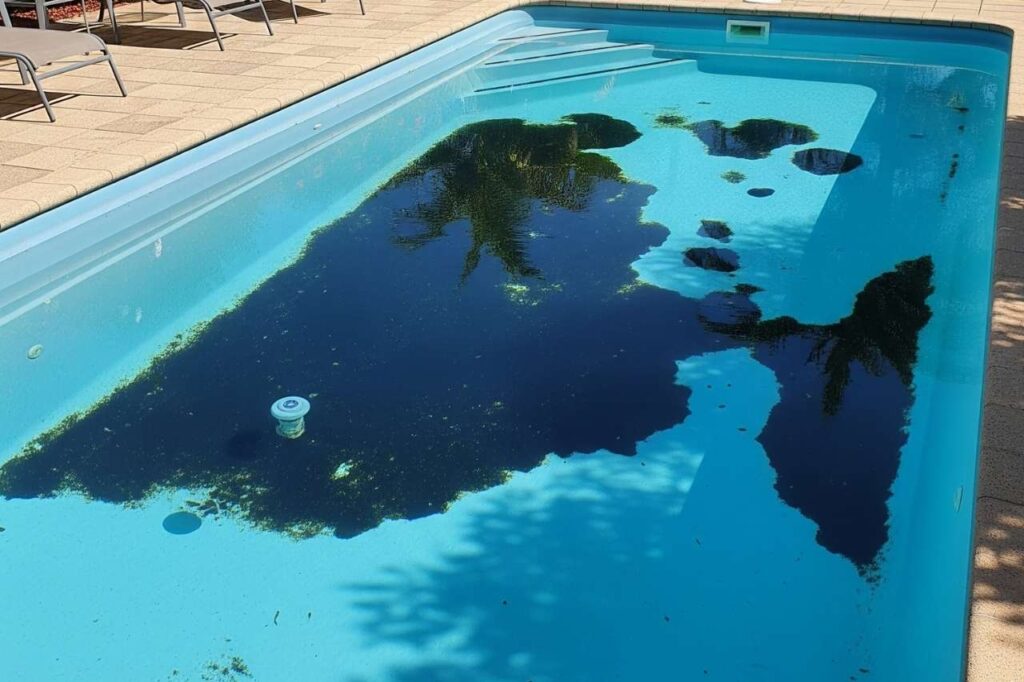
- Pink Slime: Bacteria resembling algae; appears on steps, ladders, and corners.
Preventing algae growth is always easier than treating it.
How to Keep Your Pool Algae-Free
1. Balance Your Water
Healthy water prevents bacteria and algae growth. Test water at least twice a week:
- pH: 7.2 – 7.6
- Chlorine: 1–3 ppm
- Alkalinity: 80–120 ppm
- Cyanuric Acid: 30–50 ppm
- Remove phosphates if high
2. Keep Water Moving
Run the pool pump 6-8 hours daily in summer. Good circulation spreads chemicals evenly and discourages algae. Clean your filter regularly.
3. Regular Cleaning
- Skim daily.
- Vacuum weekly.
- Brush pool walls and floor with a fibreglass-safe brush, especially corners and steps.
4. Clean the Fibreglass Pool Waterline
- Lower water slightly if needed.
- Use a non-abrasive sponge.
- Apply a fibreglass-safe pool surface cleaner.
- Scrub gently and aim to clean weekly.
Avoid harsh pads or acidic chemicals, as they may damage the gelcoat.
5. Shock Your Pool
- Shock weekly in summer; every two weeks in cooler months.
- Add shock in the evening.
- Run the filter overnight.
Stronger shocks remove green algae effectively.
Choosing the Right Algae Control Products
Selecting the right products is crucial for an algae-free pool:
- Algaecides designed for fibreglass pools: Prevent algae spores from settling without damaging surfaces.
- Chlorine vs Saltwater Systems: Chlorine is reliable and strong; saltwater systems steadily produce chlorine and are gentler on skin and surfaces.
- Safe Options for Gelcoat Finishes: Always use non-abrasive, fibreglass-safe products to avoid scratches and surface damage.
Using the right combination of sanitizer and algaecide ensures long-term algae prevention.
Note: Always pick products labelled safe for plunge pool fibreglass shells.
Fibreglass vs Other Plunge Pool Types
Not all plunge pools handle algae the same way. Fibreglass plunge pools are naturally better at staying clean, while concrete and vinyl options need more care.
Why fibreglass plunge pools are better:
- Their smooth, non-porous shell makes it harder for algae to attach.
- Concrete plunge pools are rough and porous, so algae can dig in.
- Vinyl liners can tear or wrinkle, giving algae hidden spots to grow.
Algae Resistance by Pool Type
| Pool Type | Algae Resistance | Maintenance Effort | Key Risk |
|---|---|---|---|
| Fibreglass Plunge Pool | High – smooth, non-porous surface resists algae | Low – quick brush keeps it clean | Still needs balanced water |
| Concrete Plunge Pool | Low – porous surface traps algae | High – frequent brushing + chemicals | Black algae is hard to remove |
| Vinyl Liner Plunge Pool | Medium – smooth but prone to wrinkles | Medium – liner damage can invite algae | Tears and folds give algae hiding spots |
Takeaway: If you want a plunge pool that’s easy to keep algae-free, fibreglass is the clear win
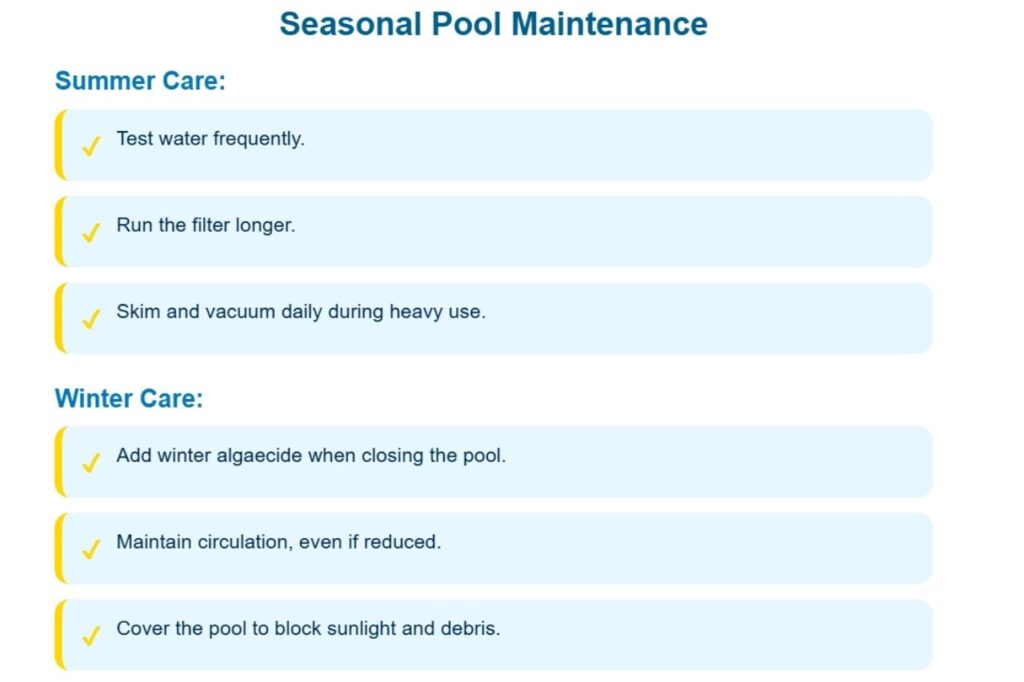
Practical Use Cases for Fibreglass Plunge Pools
Fibreglass plunge pools are compact, so they’re quicker to clean and balance than bigger pools. This makes them perfect for busy families and homeowners who want low-stress pool care.
- After heavy rain or neglect: Brush and vacuum, rebalance the water, shock the pool, and add algaecide to restore clarity fast.
- Busy homeowners: A fibreglass plunge pool needs less brushing and quicker chemical balancing thanks to its smooth surface and small volume.
- Vacations or extended absences: Pre-treat with algaecide, cover the pool, and set the pump timer so circulation continues while you’re away.
Takeaway: With a fibreglass plunge pool, even when life gets hectic, you can keep algae out with less time and effort.
Troubleshooting a Green Pool
If algae takes over:
- Brush pool walls and floor.
- Test and rebalance water.
- Shock with a high chlorine dose.
- Run the filter 24–48 hours continuously.
- Vacuum to waste.
- Clean or backwash filter.
- Apply algaecide to prevent regrowth.
Long-Term Maintenance for Fibreglass Plunge Pools
Keeping your fibreglass plunge pool algae-free in the long run comes down to good habits, clean surroundings, and protecting the pool surface.
Tip: Protecting the gelcoat is the key difference in fibreglass plunge pool care. When it stays smooth, algae has nowhere to cling.
Have questions about long-term pool care?Call us today: 07 5315 8329
If you want to understand how installation influences future maintenance, this fibreglass installation process guide covers everything from approvals to final water testing.
Conclusion
Keeping your fibreglass pool algae-free doesn’t have to be hard. By balancing water, cleaning regularly, and using the right algae control products, you’ll maintain a safe, crystal-clear pool all year.
For a worry-free experience from design to maintenance, trust Plunge Pools Sunshine Coast for premium fibreglass pool installations.
At Plunge Pools Sunshine Coast, we specialise in building and maintaining fibreglass pools for local homeowners. Contact us today to keep your pool water algae-free and ready for swimming.
FAQs
What pool chemicals work best to prevent algae in fibreglass pools?
Chlorine, algaecide, and stabiliser are essential. Together, they create an algae-free pool environment. Adding a phosphate remover reduces algae’s food source, making your pool less susceptible to algae.
How do I shock treat a fibreglass pool without harming the gelcoat?
Always pre-dissolve chlorine before adding it. This spreads chemicals throughout the pool without damaging the surface. Running the pump overnight ensures even circulation across pool walls and floor.
Are saltwater systems better than chlorine for preventing algae?
Saltwater systems steadily produce chlorine, keeping your pool unfriendly to algae and bacteria growth. Many homeowners prefer them because they’re easier on the skin and the pool surface compared to traditional chlorine dosing.
How can energy-efficient filtration systems help with algae prevention?
They allow longer, low-speed cycles that move water throughout the pool. This constant movement helps inhibit algae growth while reducing electricity costs.
What new technologies will help prevent algae in the future?
Smart pool sensors, automatic chemical dosing, and eco-friendly mineral treatments are becoming popular. These tools ensure your pool remains free of algae with less manual effort.

